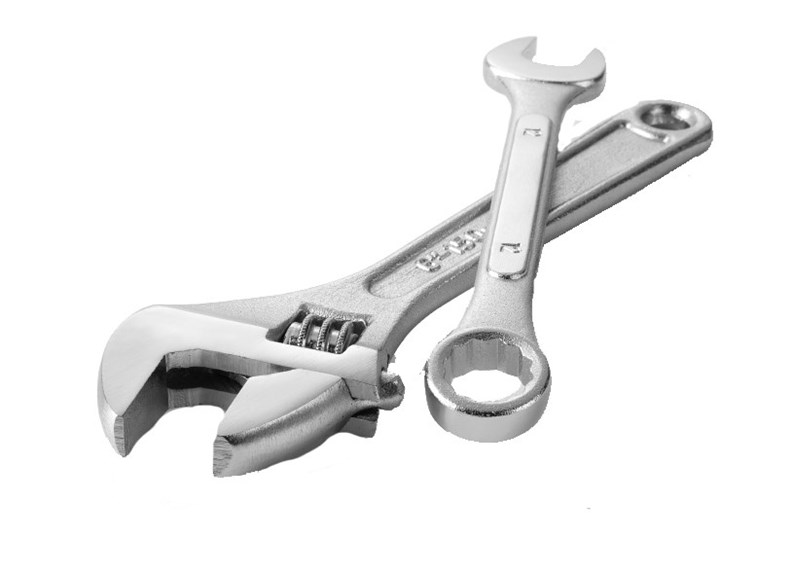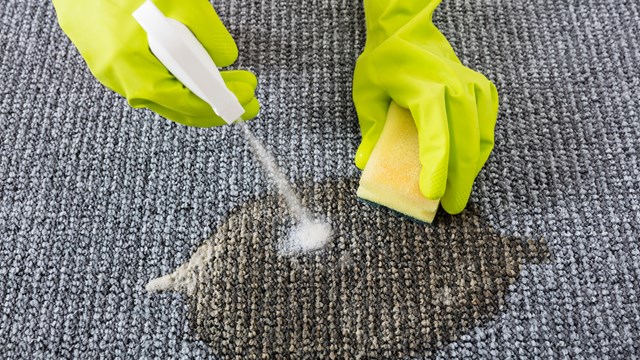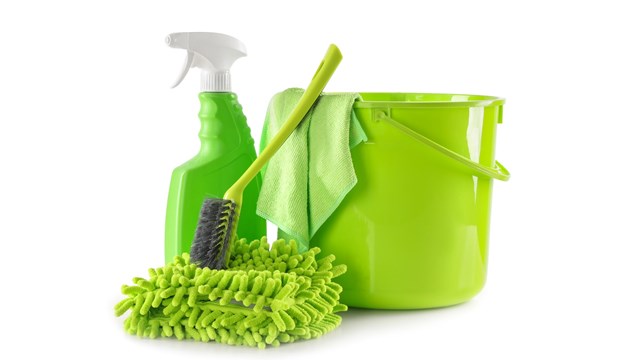No matter how conscientious your residents, no matter how dedicated your super and support staff, it’s inevitable: your building’s common areas are going to take a beating. Foot traffic can damage flooring, and everything from luggage to people’s hands can add wear-and-tear to walls and fixtures. There are steps your building’s staff can take, however, to lessen the potential for damage done, and to repair it once it happens. Here’s what you need to know, and when you’ll need to call in the professionals to keep your common areas looking their best.
Common High-Impact Areas
Every area of a residential building is prone to wear, but some areas are used more frequently than others. These are the areas you should consider when determining preventative measures, or implementing a cleaning plan.
“The highest traffic areas in a residential building are the lobby areas, elevator cabs, compactor and freight area entrances,” says Jay Ramos, president of Renotex Services Carpet & Furniture Cleaners in the Bronx. He adds that it’s also important to pay attention to areas that might not get a lot of foot traffic but which might be used often by workers, such as the areas leading to the mechanical elements of the building or the roof. Those areas can get pretty beat-up over time, and you don’t want them becoming your building’s dirty little secret.
“One point that a lot of buildings overlook is the top floor,” says Todd Saunders, president and chief executive officer of Cleaning Specialists of America, Inc. (CSA) in Long Island City. The top floor often leads to the mechanical equipment on the roof, and is where closets and conduits are located.
“This is an area where the walls or carpet get a beating from workers. When you know work is going to be done, cover the carpeting with a runner that will protect it,” says Saunders.
There are a number of factors that contribute to the wear on walls and flooring. “Multifamily dwellings have to deal with hand prints, shoe polish and garbage bag drips,” says Ramos—but the main culprit is dirt.
“The biggest enemy is the degree of dirt and grit and soot brought in from the outside on the shoes of people going into the building. An aggressive campaign of walk-off mats at any entrance that are regularly changed out and cleaned at least monthly will greatly increase the longevity of the carpet,” agrees Saunders. “Dirt gets ground into anything and will mat down carpeting, but that goes for hard stone and wood, too.”
Durable Options
There are many different products on the market that can help keep surfaces in your common areas looking presentable. These include different types of carpeting as well as walk-off mats. Mats placed at the entrance of heavily trafficked areas are a good preventative measure to take in reducing dirt and wear on carpeting or flooring.
“Most commercial residential areas use a high-end nylon [carpets and mats] with some kind of soil retardant like Scotchgard or Fiberseal,” says Ramos. “These products do not give you 100 percent protection, but they do give you an opportunity to get to a stain before it becomes a problem on the carpet or the wall.”
“Let the mats take care of it before people walk on the building’s flooring,” adds Saunders. “You should have at least two sets of walk-off mats so when one goes out to be cleaned, you can put the second set down.”
For those worried that a floor mat will be unsightly, buildings can opt for a more upscale look with a custom mat. “They can be custom made,” continues Saunders. “You can even have the logo of your building incorporated into the mat. There are buildings that have marble and granite flooring, and they only put mat down in inclement weather. In winter, you should leave it down because even when the snow is gone, salt is still on the streets.”
For walls, Ramos usually feels that a synthetic high-end covering works the best. “The natural fibers require extra attention when it is time for cleaning,” he says. “High-end wool rugs tend to also be very good, but I would stay away from light colors.”
“We recommend commercial loop carpeting that has stain resistance built in,” says June Costikyan of Restoration by Costikyan in Astoria. “The better the carpet, the more functional it will be over a period of time.”
Developing a Cleaning Schedule
While performing regular care is essential, there are some types of extra-deep cleaning that should be scheduled for your building’s carpets and surfaces. How often you clean and deep clean depends upon your building and its particular problems with wear and use.
“Common areas are typically cleaned daily by the super or the porter of the building but most cooperatives will call in a cleaning specialist for full cleanings at least once or twice a year,” says Ramos.
“Every multi-dwelling has its own unique system. The larger the building, the more cleaning and upkeep will be required,” says Ramos. “We usually set up schedules every three to four months for cleaning if they are a high traffic building—while a low traffic building may require cleaning only every six months. You may even do all the corridors every six months and do the lobby and [elevator] cabs every three months. The one thing we always advise is that the common areas should be vacuumed at least once a week by the building staff, and the main lobby entrances vacuumed either nightly or every other night for an optimum look. The building staff, also should have a spot cleaning program in place when ever there is a stain on the carpet or wall covering.”
According to Costikyan, spot cleaning can be done with a professional cleaning kit that will indicate what type of treatment should be used.
“It could be either a wet treatment or dry treatment, and the kit will tell them based on the stain how to clean it,” says Costikyan. “Some carpet stores sell these kits—professional cleaners have them. Carpet cleaning supply stores should have them and they sometimes come with the purchase of the carpet.”
But, she cautions, a spotting problem probably can’t be addressed by your building staff, and a reputable cleaning company should be brought in.
“Carpeting should be deep cleaned at a minimum every six months. That’s on the heels of an aggressive vacuuming campaign,” says Saunders. “Nothing beats an aggressive vacuuming program. It’s best to vacuum daily or at least every other day. Vacuuming should be done with a dual motor vacuum that has one motor for the vacuum and one for the beater brush. This lifts and moves the pile, allows enhanced extraction of dirt particulates and raises the pile. It allows the carpet to wear more evenly.”
Cleaning Walls and Wall Coverings
Over time, if not properly cared for, walls can start to look dingy from dirt and marks from fingerprints as well as other culprits.
“Usually a mild detergent will take out most smudges from the walls. At times you still have to use some sort of solvent for grease, tar and gum. Most minor damages on drywall can be covered with a little spackle and sandpaper,” says Ramos. The type of wall paint that’s used can make a difference when it comes to cleaning as well. “In terms of paints, there are various types of latex paint that can be scrubbed,” says Saunders. “A satin or semi-gloss finish should be used because that’s durable to repeated cleanings. I would avoid any kind of flat paint.”
In addition, many wall coverings now come with built-in protection.
“Wall coverings have come a long way in the last decade. There are many more choices that look like fabric but are actually a vinyl that is extremely durable to repeated scrubbing by a professionally-trained crew. There is nothing more dangerous to finishes than having an untrained crew cleaning them. There is a technique with solutions to use, and someone must be trained to use it,” says Saunders.
When to Call the Professionals
While there are many different carpet, wall, and surface-cleaning products on the market available to anybody, not every job can or should be handled by your super or in-house building staff. In terms of cleaning and repair, a super or on-site staff person can usually handle the smaller jobs related to walls and wall coverings. A bigger project will likely require professional care, however. When a cleaning job is too big or complicated, it may be wise to consult with a professional cleaning service. Although you might think you’re saving money by handling a mess or damage in-house, it is possible that the situation may be made even worse, resulting in more time, money and energy spent that otherwise could have been avoided.
“If it’s a couple of spots on the wall, the super can try to handle it,” says Saunders. “If it’s more than that, it’s usually more of a pervasive issue that requires a thorough cleaning of the space. You should have wall coverings cleaned every few years at least. This is not just for appearance—it’s also for health. If you don’t have a well-maintained maintenance program in place, everything starts to degrade in both appearance and longevity.”
And if you don’t know how to fix it, trying to do so might do more harm than good. “My rule of thumb is, if you do not have an answer to a problem in your building than it is time to call in a professional,” says Ramos. “The building should always have an air mover and a good high-end wet vac for emergencies.”
“If a building is spending a lot of money on carpets they should get a qualified carpet cleaner to come in and try to make a deal with them or contract out their carpet cleaning,” says Costikyan. “They should get someone who is certified, because if something goes wrong, the people can come back and correct the mistakes that were made.”
Improper cleaning can also raise health issues. “If you don’t get the dirt out and you don’t get allergens out, you are causing problems not only for carpets but for the health of the people in the building. There can be lots of bacteria left behind if you don’t properly clean a carpet,” says Costikyan.
With a proper maintenance program in place and regular care, your building’s common areas will stay in good shape for years to come. And that’s good not only for the sake of appearances, but for the health of your residents as well.
Stephanie Mannino is a freelance writer and a frequent contributor to The Cooperator.







Leave a Comment